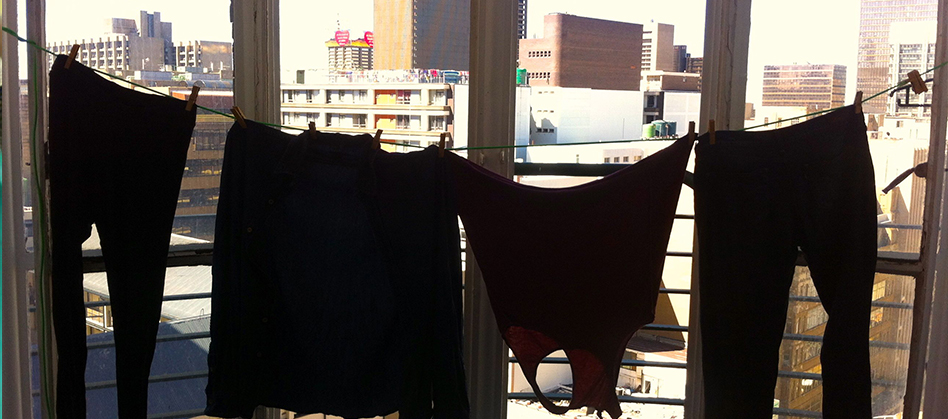
Urban Decay, Radiant Washing
Despite the large, concrete structures and streets that impose themselves on an urban environment, I find that the beauty of cities is in the people, life, and activities that take place in the midst of the concrete. One of my favorite accents in a cityscape is the colorful washing hung in windows and on balconies. These pieces of clothing, bedsheets, kitchen towels: they shed a glimpse into the life and humanity of the people that actually make the city what it is.

Outside my window here in Joburg, I see dynamic architecture, satellite dishes, old cars, new cars, taxis, street traders, kids playing, gorgeous sunsets, birds, the occasional foot chase after a robbery, and washing lines. Each of these elements is a necessary piece of the puzzle that is inner-city Joburg. So, much to my dismay, I read an article yesterday about the state of one of my neighbouring buildings, stating that:
“Washing is hung along balconies, creating a look of decay and dereliction and contributing to a general atmosphere of urban decay, neglect, and poor urban management in the surrounding area.”
As I read this, (you can imagine) I was livid… Aside from my own personal opinion that hanging laundry is beautiful, I was most upset about the careless lack of understanding of another way of life, and alternative ways of doing things. Many of my neighbours and myself do not have washing machines or dryers. Sundays are often dedicated to washing the week’s clothing, and we hang our clothes where there is air and sun. I rarely hang my clothing in the allocated public space for washing in my building, because it includes long trips up and down stairs and getting keys, and you never know if your favourite top might go missing. I hang my clothes conveniently in my windows, as do many in the city.
If people are renting a space to live, that is their space, and whatever decorations they choose to put on their balcony, be it washing, braais, art, or rubbish – that is their choice. The exterior of the building, the paint, and the windows – yes, those can certainly use some improvement by the building’s owners/managers/collective. However, the washing and the day-to-day human moments of the city should not be compromised.

The beautiful Manners Mansions certainly needs some upgrading, but I do believe this can be done in collaboration with the current vibrant residents of the Johannesburg CBD. Many points in the article are fascinating, and well-researched. It would be exciting to restore the building back its historical glory as much as possible, but I believe that any positive changes will be neglected if they are not done with the cooperation of the community. The Johannesburg inner-city will never be exactly as it was under apartheid, and I don’t think that anyone wants it to be. The new inner-city can and will be more beautiful and dynamic, if we can just accept that everyone has different ways of living and different styles. Those diverse styles are what make a city cosmopolitan, unique, innovative, and brings life into the concrete structures that surround us.
What do you think about washing lines on balconies? What accents do you find beautiful in the city? How can we all work together to understand complex social issues and continue to build beautiful cities moving forward?
From the heart of Jozi,
Alex
